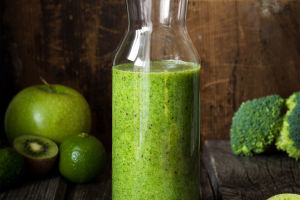Aloe vera, renowned for its medicinal properties, has long been hailed as a healing plant. However, its potential as an edible delicacy is often overlooked.
In recent years, culinary enthusiasts and health-conscious individuals have begun to explore the culinary possibilities of aloe vera, incorporating it into various dishes and beverages.
This essay will explore the nutritional benefits, culinary uses, and potential risks of consuming edible aloe vera.
First and foremost, aloe vera is packed with nutrients that contribute to overall health and well-being. Rich in vitamins, minerals, and antioxidants, aloe vera offers many health benefits when consumed.
It contains vitamins A, C, and E, which boost immune function, promote healthy skin, and protect against oxidative stress. Aloe vera is a good source of minerals such as calcium, magnesium, and potassium, essential for maintaining bone health, muscle function, and electrolyte balance.
Its high antioxidant content helps fight inflammation, reduce the risk of chronic diseases, and support overall vitality.
Regarding culinary applications, aloe vera adds a unique flavor and texture to various dishes and beverages. Its mild, slightly tangy taste pairs well with sweet and savory ingredients, making it a versatile ingredient in the kitchen.
Aloe vera gel can be extracted from the plant's leaves and incorporated into smoothies and juices. It can also be chopped and added to salads, salsas, and stir-fries to impart a subtle crunch and a hint of citrusy flavor.
Aloe vera can be blended into sauces, marinades, and dressings to enhance their nutritional profile and add a touch of freshness.
However, it is essential to exercise caution when consuming edible aloe vera, as certain parts of the plant contain compounds that may be toxic if ingested in large quantities. The outer layer of the aloe vera leaf contains a yellowish sap called latex, which contains anthraquinone glycosides, compounds known for their laxative effects.
While small amounts of latex are generally considered safe for consumption, excessive intake can lead to gastrointestinal discomfort, diarrhea, and electrolyte imbalances.
It is advisable to remove the latex from the aloe vera gel before consuming it, either by carefully peeling the outer layer of the leaf or purchasing commercially available aloe vera gel that has been processed to remove the latex.
Individuals with allergies to plants in the Liliaceae family, such as onions, garlic, and tulips, may experience allergic reactions when consuming aloe vera. Symptoms may include skin irritation, itching, swelling, and difficulty breathing.
Therefore, it is essential to exercise caution and consult a healthcare professional before incorporating aloe vera into the diet, especially for those with known allergies or underlying health conditions.
Edible aloe vera offers a myriad of nutritional benefits and culinary possibilities. Packed with vitamins, minerals, and antioxidants, aloe vera promotes overall health and well-being when consumed in moderation. Its mild flavor and versatile texture make it a welcome addition to various dishes and beverages.
However, it is crucial to exercise caution and remove the latex from the aloe vera gel before consuming it to avoid potential adverse effects. By exploring the culinary potential of edible aloe vera while being mindful of possible risks, individuals can enjoy its unique flavor and reap its numerous health benefits.


